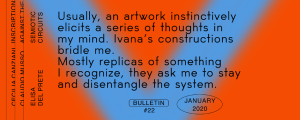Le Corbusier: An atlas of modern landscapes at CaixaForum Barcelona
Charles Édouard Jeanneret-Gris was born in Le Chaux de Fonds, Switzerland on 6th October 1887.
Since January 29 until May 11, it is possible to discover a retrospective of Le Corbusier’s artworks at CaixaForum, Barcelona. Le Corbusier, an atlas of modern landscapes is a collection of 215 objects organized by the Museum of Modern Art in New York in collaboration with the Fondation Le Corbusier in Paris, and produced by Obra Social “La Caixa”. The exhibition will travel to Madrid from 10th June to 9th October 2014.
The exhibition is divided into five groups: 1887 – 1917, From the Jura mountains to the wide world; 1917 – 1929, The conquest of Paris; 1929 – 1940, Responding to Landscapes, from Africa to the Americas; 1945 – 1965; Chandigarh: A new urban landscape in India; 1950 – 1965, Toward the Mediterranean or eternal return, which help us to discover the work of this versatile swiss artist.
Le Corbusier studied watch engraving at Art School, later he entered the Advanced Decorative Arts Courses, and finally Architecture.
In 1917, commissioned by Louis Fallet, he built La Villa Fallet in collaboration with René Chapallaz.
In 1912 he built La Villa Jeanneret-Perret, “La Maison Blanche”, for his parents. This is his first work by himself and we can see a reproduction of the dining room at CaixaForum.
From 1907 and before moving to Paris, Le Corbusier travelled around Europe. He visited Greece, Austria, Italy, German, Turkey, etc. During those days he painted a lot of watercolours we can discover in the exhibition: Parthenon (1911), Boats on Bosporus, Outline from Istanbul (1911), as well as his first oil on canvas: La cheminée (1918) and several compositions of objects on the canvas: Composition avec la lune (1929), Composition avec una poire (1929), etc.
In 1917 he moved to Paris, where in 1919 he launched L’Esprit Nouveau magazine with Amédée Ozefant and Paul Dermée, and in 1920 he adopted the pseudonym Le Corbusier for his architectural persona.
During his first years in Paris, he wrote several articles, painted and built several villas for the Paris elite. A sample of these villas is the second recreation we find in the exhibition: Interior for Villa Church´s pavilion: room with chimney (1927 – 1929) by Arthur Rüegg studio (2014). Inside this recreation we can discover as well original furniture from Le Corbusier: Chaise Longue LC4 (1928), the third prototype to Grand Confort LC2 armchair, big size (1928) and a chair with swing back LC1 (1929).
Le Corbusier would like to work in big scale and got involved in urbanism, but his projects were only ideas on paper. In the exhibition we can discover several projects in Montevideo, Rio de Janeiro, Sao Paulo, the transformation of Algiers or a project for a new hospital in Venice (1962 – 1965).
Finally, after World War II, in 1950, he has an opportunity to design an entire city with the commission for a new regional capital at Chandigarh, in the northern Indian state of Punjab.

Le Corbusier. Assembly Chandigarh. Model in plaster and wood. An atlas of urban landscapes. CaixaForum. Barcelona.
During the last fifteen years of his life, Le Corbusier achieved many aims he had been following for decades. He built four Unités d´Habitations in France and one in Berlin and a building at Harvard University. We can discover the Unité d’Habitation (1945 – 1952) in Marseille through the pictures and a reconstruction of a dining room.

Le Corbusier. Miniature Unité d´habitation, Marseille. 1946-1952. An atlas of modern landscapes. CaixaForum. Barcelona

Le Corbusier. Urbanism sketch for Rio De Janeiro. 1929. An atlas of modern landscapes. CaixaForum. Barcelona
The last object before leaving the exhibition is a reconstruction, by Cassina Spa – Milano, of his companion in Roquebrune-Cap-Martin (France): an application of the Modulor, a single room of 366 x 366 cm floor area and 226 cm height, prefabricated at Ajaccio.
Le Corbusier died on 27th September while he was swimming at Cap- Martin.

Le Corbusier. Companion in Roquebrune-Cap-Martin (France). An atlas of modern landscapes. CaixaForum. Barcelona
LE CORBUSIER: AN ATLAS OF MODERN LANSCAPES. CAIXAFORUM. BARCELONA. Through 11th May 2014.
by Susana Lopez Fernandez
in News
Feb 11, 2014
























